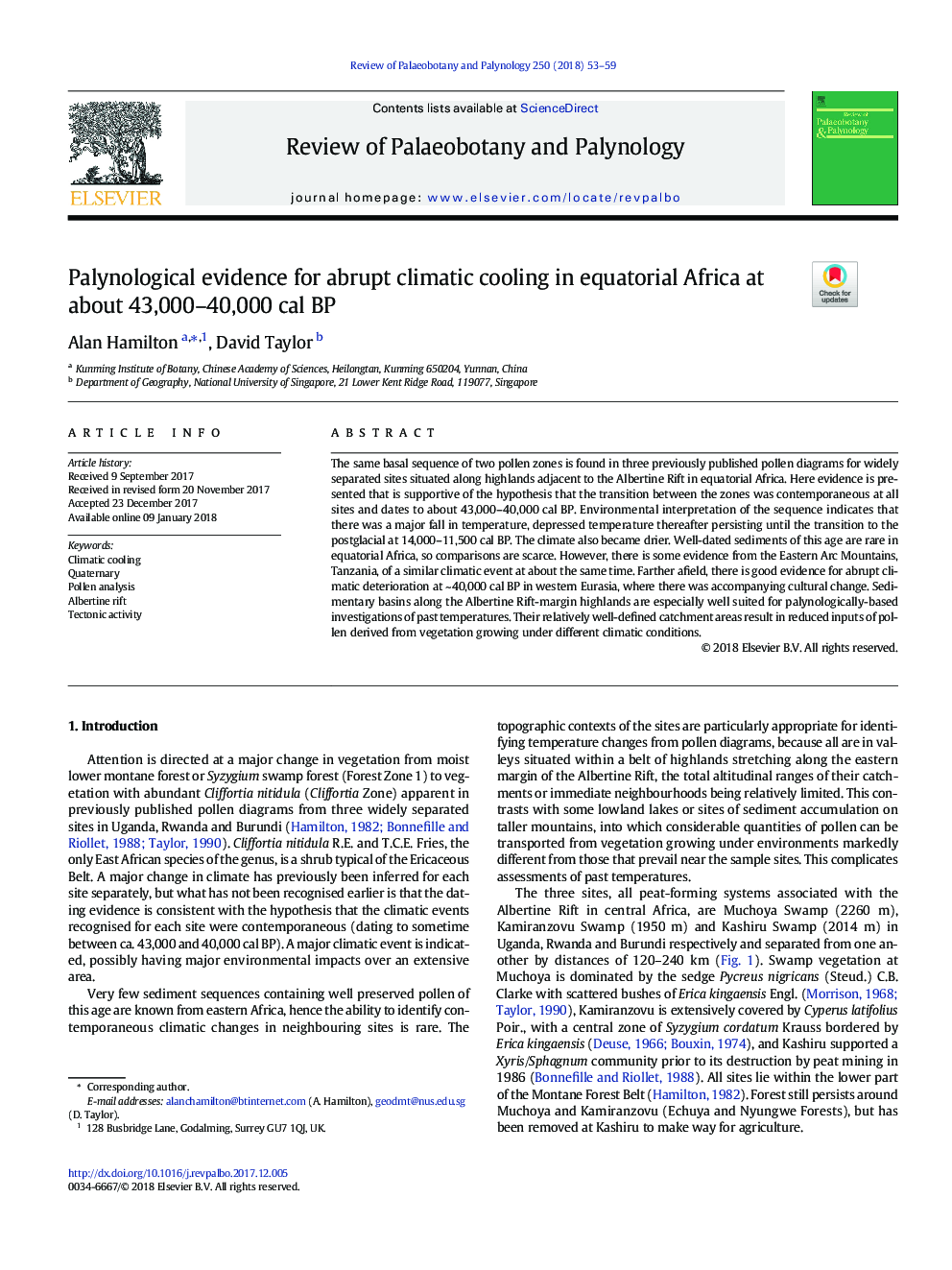| کد مقاله | کد نشریه | سال انتشار | مقاله انگلیسی | نسخه تمام متن |
|---|---|---|---|---|
| 8916644 | 1642447 | 2018 | 7 صفحه PDF | دانلود رایگان |
عنوان انگلیسی مقاله ISI
Palynological evidence for abrupt climatic cooling in equatorial Africa at about 43,000-40,000 cal BP
دانلود مقاله + سفارش ترجمه
دانلود مقاله ISI انگلیسی
رایگان برای ایرانیان
کلمات کلیدی
موضوعات مرتبط
مهندسی و علوم پایه
علوم زمین و سیارات
فسیل شناسی
پیش نمایش صفحه اول مقاله

چکیده انگلیسی
The same basal sequence of two pollen zones is found in three previously published pollen diagrams for widely separated sites situated along highlands adjacent to the Albertine Rift in equatorial Africa. Here evidence is presented that is supportive of the hypothesis that the transition between the zones was contemporaneous at all sites and dates to about 43,000-40,000 cal BP. Environmental interpretation of the sequence indicates that there was a major fall in temperature, depressed temperature thereafter persisting until the transition to the postglacial at 14,000-11,500 cal BP. The climate also became drier. Well-dated sediments of this age are rare in equatorial Africa, so comparisons are scarce. However, there is some evidence from the Eastern Arc Mountains, Tanzania, of a similar climatic event at about the same time. Farther afield, there is good evidence for abrupt climatic deterioration at ~ 40,000 cal BP in western Eurasia, where there was accompanying cultural change. Sedimentary basins along the Albertine Rift-margin highlands are especially well suited for palynologically-based investigations of past temperatures. Their relatively well-defined catchment areas result in reduced inputs of pollen derived from vegetation growing under different climatic conditions.
ناشر
Database: Elsevier - ScienceDirect (ساینس دایرکت)
Journal: Review of Palaeobotany and Palynology - Volume 250, March 2018, Pages 53-59
Journal: Review of Palaeobotany and Palynology - Volume 250, March 2018, Pages 53-59
نویسندگان
Alan Hamilton, David Taylor,